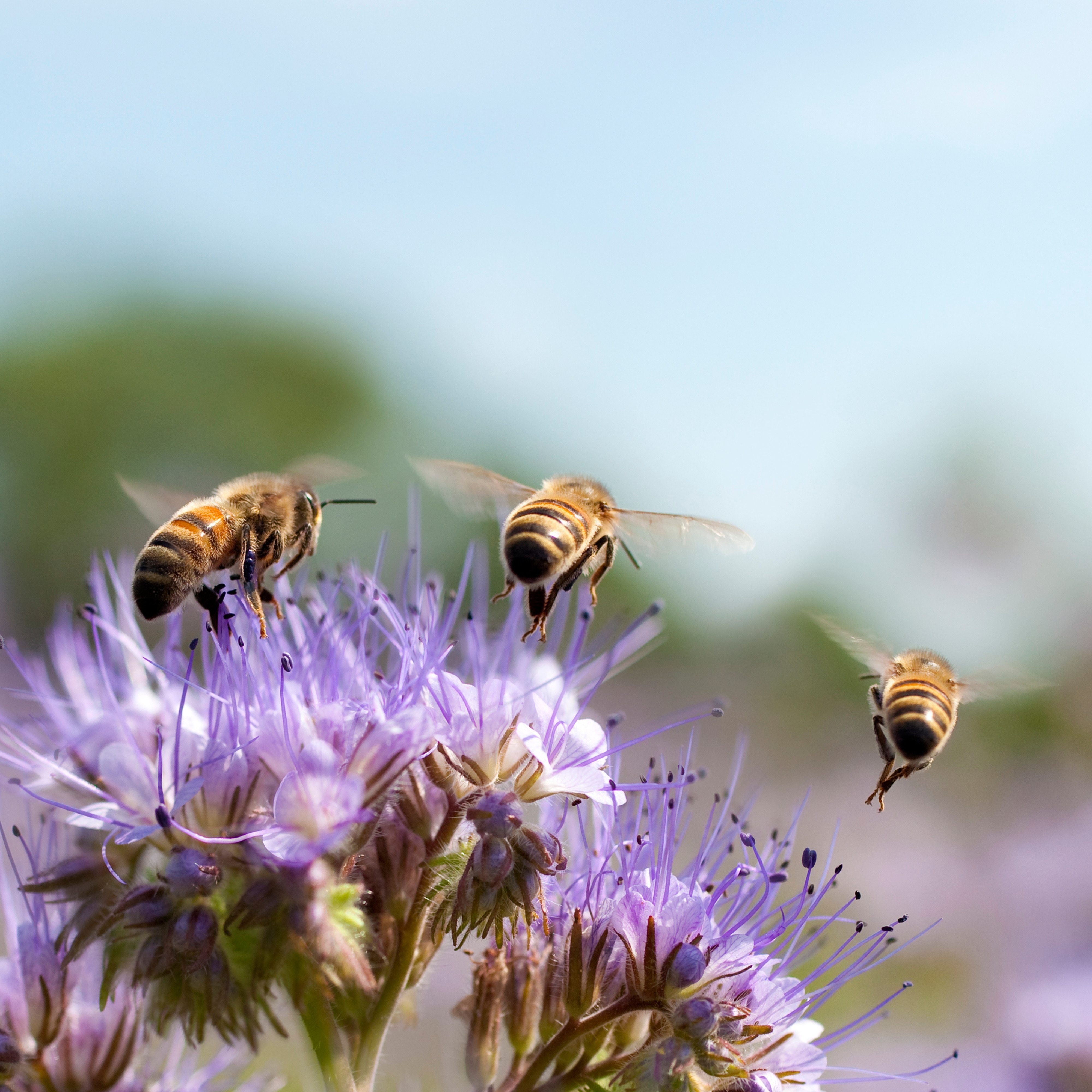Bee Stings: Know the Symptoms and Act Quickly

As summer winds down, we look forward to the fall season with nature walks, backyard gatherings, and outdoors activities. It’s also a time when bees become more aggressive as they begin to prepare for colder temperatures. Reactions to bee stings can range from mildly irritating to extremely dangerous, especially if you’re allergic to bees. It’s important to recognize symptoms so that you can react quickly. Then, follow up with an allergist. Understanding your bee sting allergy is the best way to be prepared, should you get stung again.
Common Symptoms
Bee stings are common, especially if you spend plenty of time outdoors. The minor and inconvenient symptoms you may experience at the sting site are burning, slight swelling, or a red welt. While these symptoms may be painful, they will most likely resolve in a few hours. In most cases, bee stings are just annoying and treating them at home is all that’s needed.
Keep in mind that if you are unsure about symptoms and you need advice, our 24-Hour Help Nurses are just a phone call away. These nurses are available to assist Medical Associates Clinic patients and Medical Associates Health Plan members who have health-related questions, need medical advice, or need to reach a Medical Associates physician. Click here to learn more.
Allergic Reactions
Sometimes exposure to an allergen results in a serious and potentially deadly reaction known as anaphylaxis. On average, over 60 deaths occur each year in the United States due to bee sting anaphylaxis. Symptoms occur suddenly and should be addressed quickly. Early signs may include a runny nose, skin rash, or malaise (general uneasiness).
Moderate to severe symptoms include:
- Difficulty breathing
- Dizziness and nausea
- Itching and hives throughout the body
- Swelling of the throat and tongue
- Stomach cramps and diarrhea
- Rapid fall in blood pressure, resulting in shock and, possibly, death
If you experience these severe bee sting symptoms and you have an epinephrine auto-injector (EpiPen), use it. Additionally, call 911 or a local emergency number. Keep in mind that antihistamine pills, such as diphenhydramine (Benadryl), will not be sufficient in these severe cases because it works too slowly.
Response & Treatment
No matter your symptoms, there are important steps you should take after being stung:
- Stay calm. Although most bees usually only sting once, wasps and hornets can sting again. If you are stung, calmly walk away from the area to avoid additional attacks.
- Remove the stinger. If the stinger remains in your skin, remove it by scraping over it with your fingernail or a piece of gauze. Never use tweezers to remove a stinger, as squeezing it can cause more venom to release into your skin. Note, there may not be one. Unlike bees, wasps do not leave their stingers.
- Wash the affected area with soap and water. Then apply a cold pack to reduce swelling. If the sting is on an arm or leg, elevate it.
- Pay close attention to your symptoms. If possible, let someone nearby know what has happened.
- If needed, administer epinephrine or call 911.
- If an allergy is suspected, follow up with a local medical professional for testing and further treatment.
Bee stings are minor wounds, but they affect everyone differently. They also mostly occur outdoors when you may be in a remote location. Staying informed about bee sting allergies and getting tested when you have concerns is the best way to keep you safe. Preventive (venom immunotherapy) and reactive (EpiPens) treatments are available for people with severe bee sting allergies. Find out what treatments can keep you safe and reduce your risk of a systemic allergic reaction.
Allergy, Asthma, & Immunology Department
Sources:
https://www.cdc.gov
https://www.mayoclinichealthsystem.org
https://www.aad.org